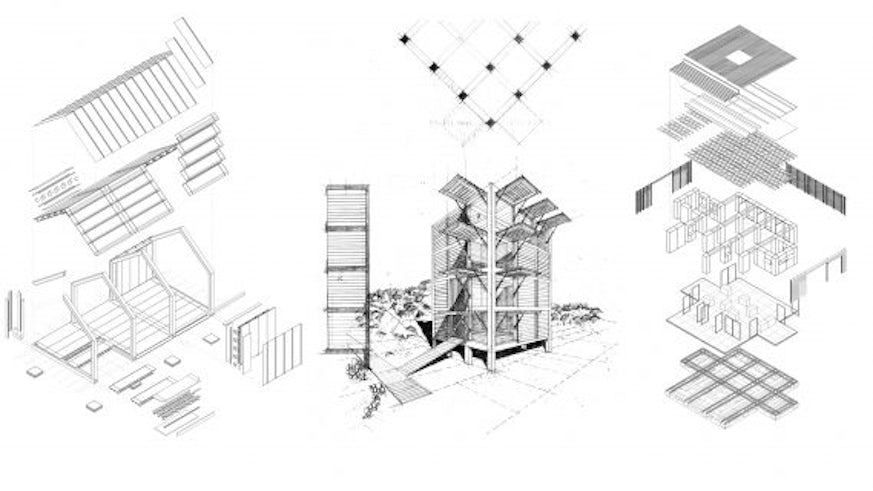Dr Coombs’ award-winning research project “The Development of the Building Envelope Using Welsh-Grown Timber: A study Through Prototyping” explores the use of Welsh-grown timber in the building envelope, through the prototyping of a series of live design projects with a focus on species, technology and tectonic form.
Compared to Europe and regions such as the Vorarlberg, Austria, Wales is perceived as having an underdeveloped and underperforming timber construction industry with only 15% forest cover to supply a variety of timber sectors. Currently, the Welsh timber industry relies heavily on the importation of sawn wood, timber board products and innovative, engineered timber systems to meet an increasing demand to improve construction efficiency and environmental performance of the building envelope.
Over the last decade, Dr Coombs has been working closely with the Welsh timber industry on the use of home-grown Welsh timber in contemporary architecture. His research analyses the properties of Welsh-grown soft and hardwoods, the technical and skill limitations and opportunities of the industry and highlights the impact of the use of timber on the tectonic form of the building envelope.
As project architect, his research has led to a range of innovative projects, from visitor centres to smaller scale prototypes and experiments that are informed by context, form, sustainability, detail and cost. He is previously lead a Technology Strategy Board funded research project on the award winning low cost Sitka spruce social housing system, Ty Unnos, that has led to projects for a low energy house, classroom, exhibition pavilion, visitor centre and cycling centre.
The RIBA President’s Awards celebrate the best research in the fields of architecture and the built environment in four categories: Cities and Community, Design and Technical, History and Theory, and the Annual Theme which this year was ‘Housing’. Dr Coombs’ research on Welsh timber won the award in the Design & Technical category.
For more information about this research, take a look at Dr Coombs’ PhD thesis.
